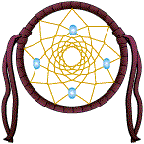Would you like to make this site your homepage? It's fast and easy...
Yes, Please make this my home page!
Teacher Page

Introduction:
This WebQuest was developed
to compliment the Native American Unit found in Exploring America's
Heritage by Heath Social Studies (Copyright 1991). If you do
not have this text, I have included the necessary information
to cover with your students while exploring the WebQuest. Please
use this information to supplement the WebQuest at your discretion.
The focus for this WebQuest is on having
students gather information and synthesize it to solve a problem.
Students must be familiar with Native American Tribes, their resources,
and their environment. Students will then use this information to
form a summary. This focuses on the reading and writing skills found
in the Pennsylvania State Standards.

Learners:
This WebQuest can be modified
to accommodate LS and LD students. Accommodations include having
students pair up to buddy read, using the link for the text, discussions
of material, and so on. Please feel free to modify this WebQuest
to meet your individual classroom's needs.

Objectives:
-
Students will utilize research skills and web etiquette to
accomplish a set task.
-
Students will synthesize information and draw conclusions
using inferential thinking.
-
Students will demonstrate summarizing skills.
-
Students will develop a product demonstrating all above skills.

Standards:
Included are the Pennsylvania
Standards this WebQuest and project should hit.
To View the detailed Standard, follow the above link.
-
1.1.5 A,D,G Learning to Read Independently
-
1.2.5 A,B Reading Critically in All Content Areas
-
1.5.5 B,C,D,E,F,G Quality of Writing
-
1.8.5 B,C Research

Process:
The duration of the unit if highly flexible. Before
beginning the WebQuest, you should have covered the following topics:
-
Migration to the Americas
-
Hunter/Gatherers
-
Importance of Resources to Native American Tribes
-
Environment and Climate in desert, plains, and woodlands
-
Writing a summary
-
Reading for information
-
Taking Notes
All the above information is supplemented by the research
sites the students will be visiting on the Quest.
During the Quest, students may work individually or in
groups (dependent upon your technology availability). Students should
be monitored. Teacher should serve as a guide, not an information
resource. It is recommended that the students explore the information
on one tribe over the course of 2-3 days before moving on to the next tribe.
After students have explored all tribes, they may move
on to the task of identifying the artifacts. The key for the artifacts
is as follows:
-
1 - Haida Cedar Canoe. Used for fishing and whaling.
Cedar was the most abundant wood in the Queen Charlotte Islands.
-
2 - Pebbles. Used by the Anasazi Tribe in Dry Farming
- process of setting stones on a hill side to create a run-off into planted
areas.
-
3 - Iroquois Longhouse. Created using Birch Bark.
Housed several families. Also used were wigwams.
-
4 - Buffalo Hide Teepee. Used by the Pawnee tribe of
the Great Plains. Buffalo was an important resource and all parts
of the Buffalo were used. The teepee was a portable lodge.
-
5 - Haida Totem Pole. Used by the Haida to represent
families and tell stories. The Haida were highly creative and decorated
everything in their surroundings, including houses.
-
6 - Birch Bark Canoe. The Birch tree was native to
the New York area where the Iroquois lived. The bark was used to
shape canoes for fishing and travel.
-
7 - Harpoon. The Haida used these harpoons, carved
from cedar, to hunt whales off the coast of Canada. Highly dangerous.
-
8 - Buffalo Hide. Used by the Pawnee for clothing,
as well as shelter.
-
9 - Wolf Pelt. Also used by the Pawnee. Was worn
for hunting, as Buffalo did not fear wolves. The tribe members could
sneak up on the Buffalo in the wolf pelts.
Students should focus on how and why the artifacts were used,
and not what the artifacts are.

Grading:
A rubric for scoring has been supplied on the student
page. This rubric may be modified to suit your individual needs.
Suggestions for additional assessment include:
-
Group work and presentations
-
Creating an artifact exhibit
-
Research Paper
-
Creating a Native American Village
-
Writing a play

Helpful Links and Resources:
The following are links to Native American indexes,
site compilations, and educational resources.
 Conclusion:
Conclusion:
I hope you found this WebQuest a helpful and fun supplement
to your Native American Unit. If you have any questions or comments,
please contact me!


![]()
![]()
![]()
![]()
![]()
![]()